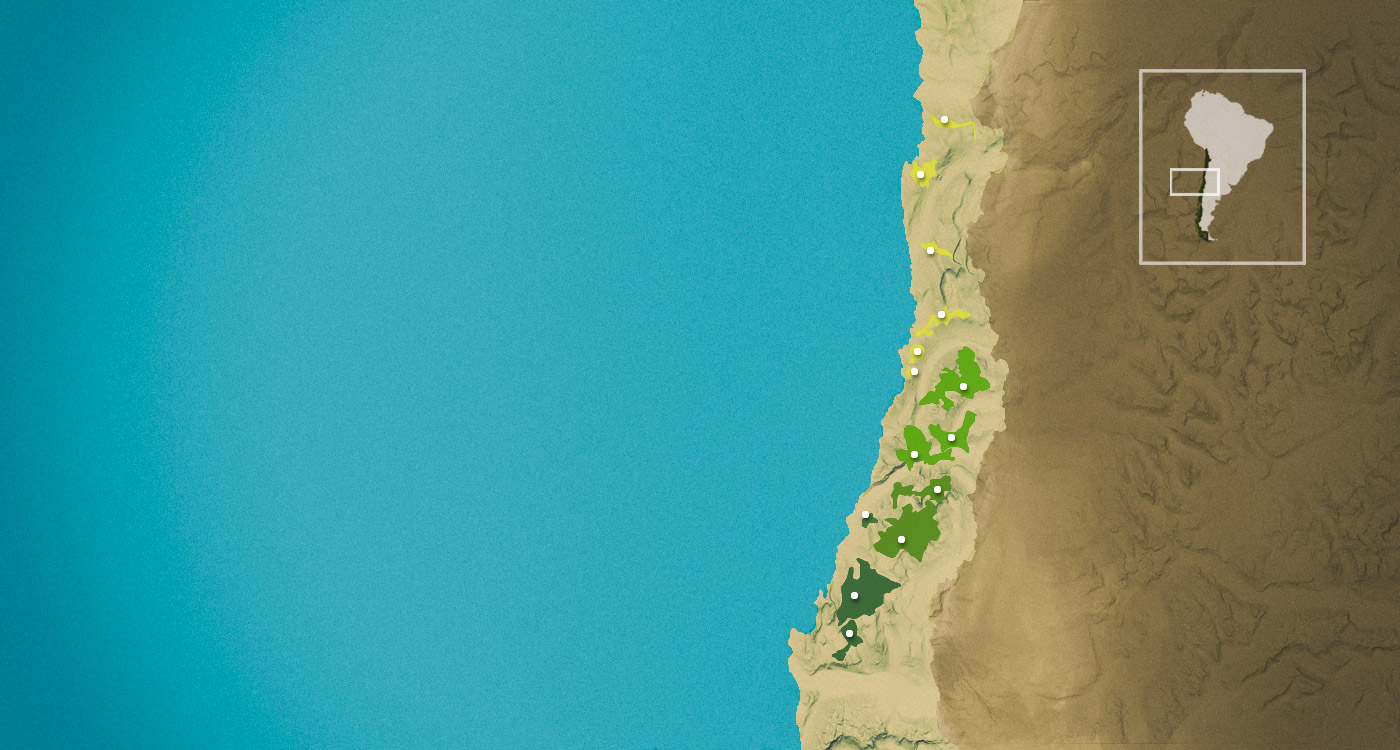FUNDO EMPEDRADO was added to the company’s properties in the year 2003. Located near Constitución, 180 kilometers south of Curicó.
This 369-hectare estate is the result of years searching for slate soils, known as “piedra laja” in Chile and “licorella” in Catalonia. The unique feature of this kind of stone is that it allows very good drainage and accumulates solar radiation, maintaining a warm mesoclimate (due to its black color).
After several years of research in the Empedrado area, it was decided to produce a special, unique Pinot Noir. Never before had a vinestock been planted in this kind of ground in Chile, which makes it particularly interesting.
The land is very rough, with incredibly steep slopes, so it is prepared using terraces so the vines can be planted. As a result, it produces low yields with a high concentration.

